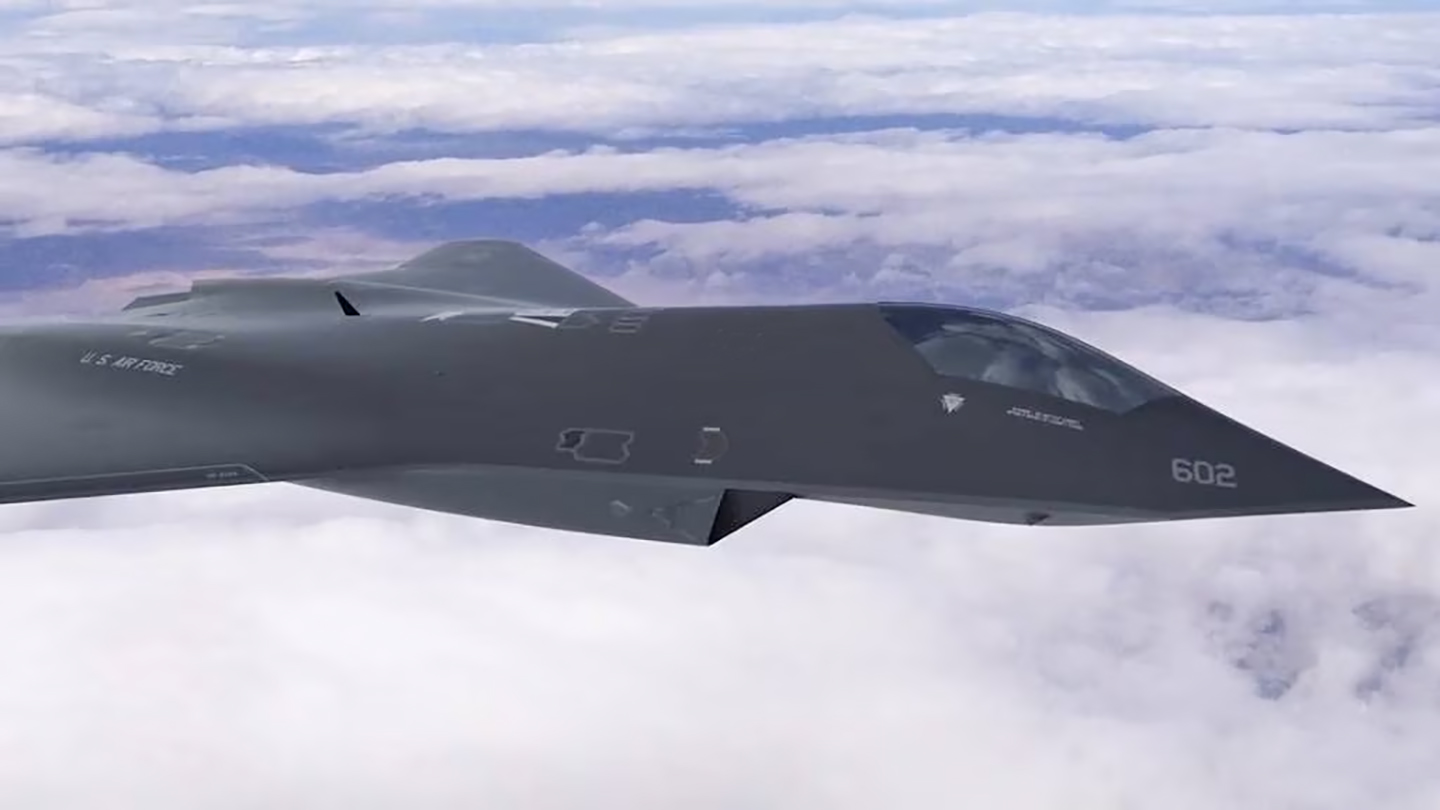The U.S. Air Force and the U.S. Navy’s race to develop and eventually deploy 6th generation manned tactical jets, as well as unmanned combat aircraft to go with them, has quickly risen to the top of the priority lists for both services. These aircraft will be packed with cutting-edge technologies and features. While tailless, extremely stealthy, and highly efficient airframes with long-range and large payload capacity are commonly discussed when speculating about these still secretive crewed designs, one element that doesn’t get much interest but is arguably just as important, has to do with how they will sense, communicate, and jam.
This is a huge and complex topic for both service’s next-generation air combat (NGAD) initiatives, but one development, in particular — packing all that functionality into single, increasingly powerful, and scalable arrays — has big implications.

Don’t just take my word for it. Even Secretary of Defense Austin surprisingly alluded to it in his remarks on U.S. Indo-Pacific strategy at the Shangri-La Dialogue last summer. This was a high-profile speech in which he gave mention to some of the most exciting technological developments that will help the U.S. and its allies maintain dominance in the Indo-Pacific, stating, in part:
“We’re developing integrated sensors that operate at the intersection of cyber, EW [electronic warfare], and radar, communications.”
Not Your Father’s Radar Array
Active electronically scanned arrays (AESAs) have many advantages. Without a need to mechanically scan rapidly in different directions, especially while under heavy g forces and battering turbulence, they lack all the moving parts of their predecessors, making them far more reliable, and in some instances, more compact and lighter. They can scan huge volumes of airspace and large areas of the planet’s surface extremely fast. Tracking many targets simultaneously with high reliability is also a core feature. In addition, they provide better range, higher resolution over that range, enhanced performance against low-observable (stealthy) targets, can be harder to detect, and are less susceptible to certain types of electronic warfare attacks and countermeasures.
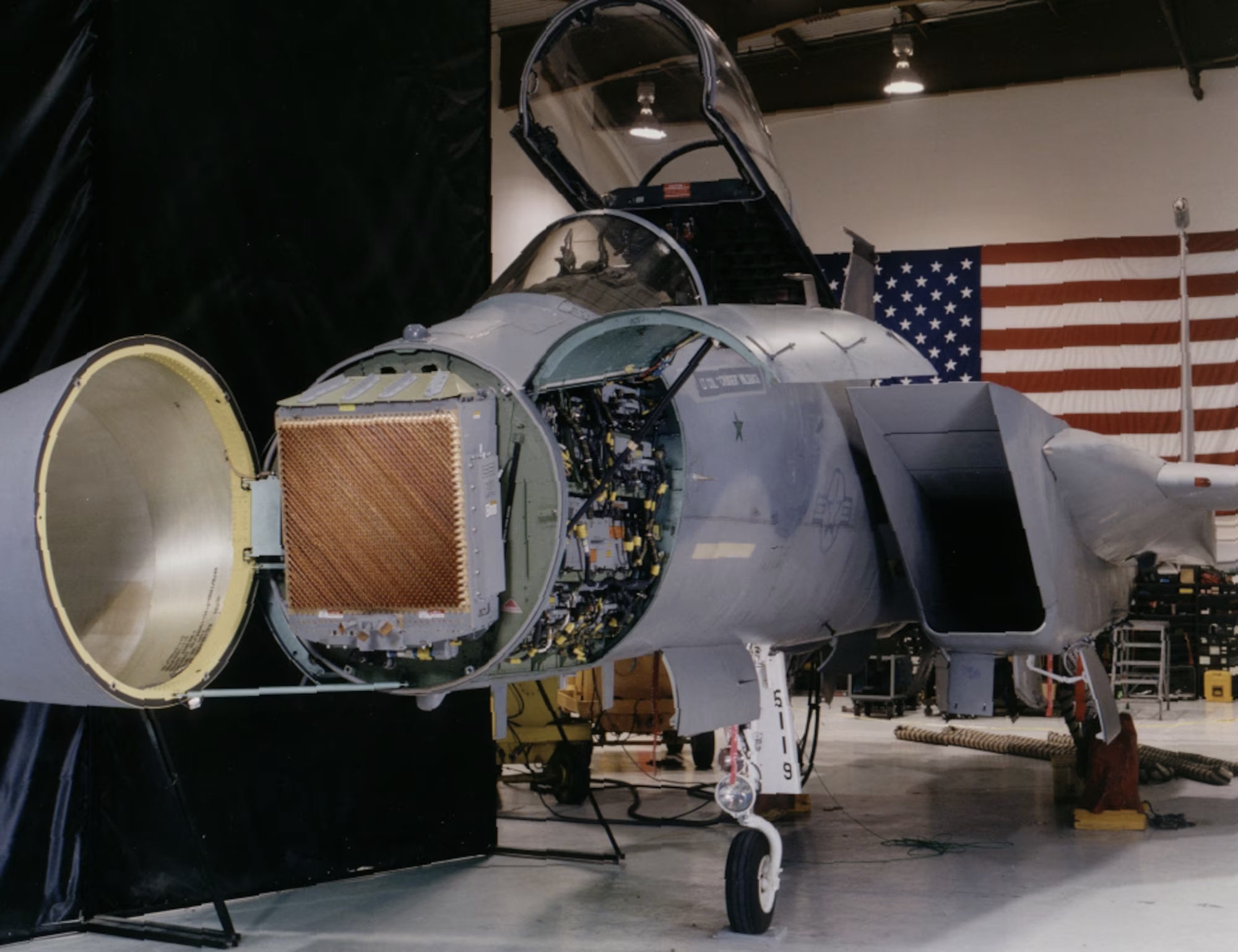
AESA arrays’ potential to perform multiple functions — specifically air and ground surveillance, communications, electronic and even cyber warfare — has been something we have discussed for many years, but it wasn’t part of the ‘brochure’ for many past systems. Even discussing these possibilities was not something some manufacturers or users were eager to do. Recently these abilities have gone from being a fairly unspoken, latent set of possible tertiary capabilities to highly touted primary ones. In other words, the discussion has gone from what specific AESA-based systems could possibly do beyond traditional radar functions to all the other things they can and will do.
Many of the newest aerial AESA-based systems, as well as those used in other applications, such as advanced electronic warfare systems on Navy surface combatants, have the stated ability to support all three capabilities, for instance. The fact that these arrays are becoming smaller, lighter, and more powerful, as well as cheaper in some instances, only makes their use as multi-function emitters all that much more attractive. This is true for use in sea, ground, and space domains, but it’s especially true when it comes to extrapolating their potential into an emerging Next Generation Air Dominance air combat ecosystem.

Sensor Fusion To Fused Sensors
4th generation fighters, such as the U.S. ‘teen series’ (F-14, F-15, F-16, and F/A-18), featured more powerful and automated sensors. They also had increasingly well-refined human-machine interfaces that could help aircrews leverage the disparate forms of information from those sensors. Datalink info, in some circumstances, could also be displayed in an integrated fashion. These elements, as well as voice radio transmissions, made up a ‘tactical picture’ for the 4th generation fighter aircrew.
The advents of cockpits designed around multi-function displays further facilitated this. Still, the actual fusion of all that information flowing in from separate systems and sources had to be done, at least to a large degree, in the aircrew’s brains — the mind acting as an advanced central mission computer correlating all the data at hand from disparate systems.

5th generation fighters, like the F-22 and to a greater extent the F-35, feature a high degree of ‘sensor fusion’ — a broad term that basically means all the information the aircraft collects can be incorporated, as well as correlated and de-conflicted, together into a seamless tactical ‘picture.’ This could include radar, passive infrared, electronic support measures, and datalink info, as well as weapons engagement envelopes, electronic warfare data, identification friend or foe (IFF), locations of enemy and friendly assets (and the latter’s status), and navigation, all combined together.
As such, sensor fusion offers aircrew a ‘god’s eye’ view of the battlespace. This drastically increases situational awareness, and thus survivability and lethality. In some cases, it also makes coordination and combined tactics with other assets far more achievable.
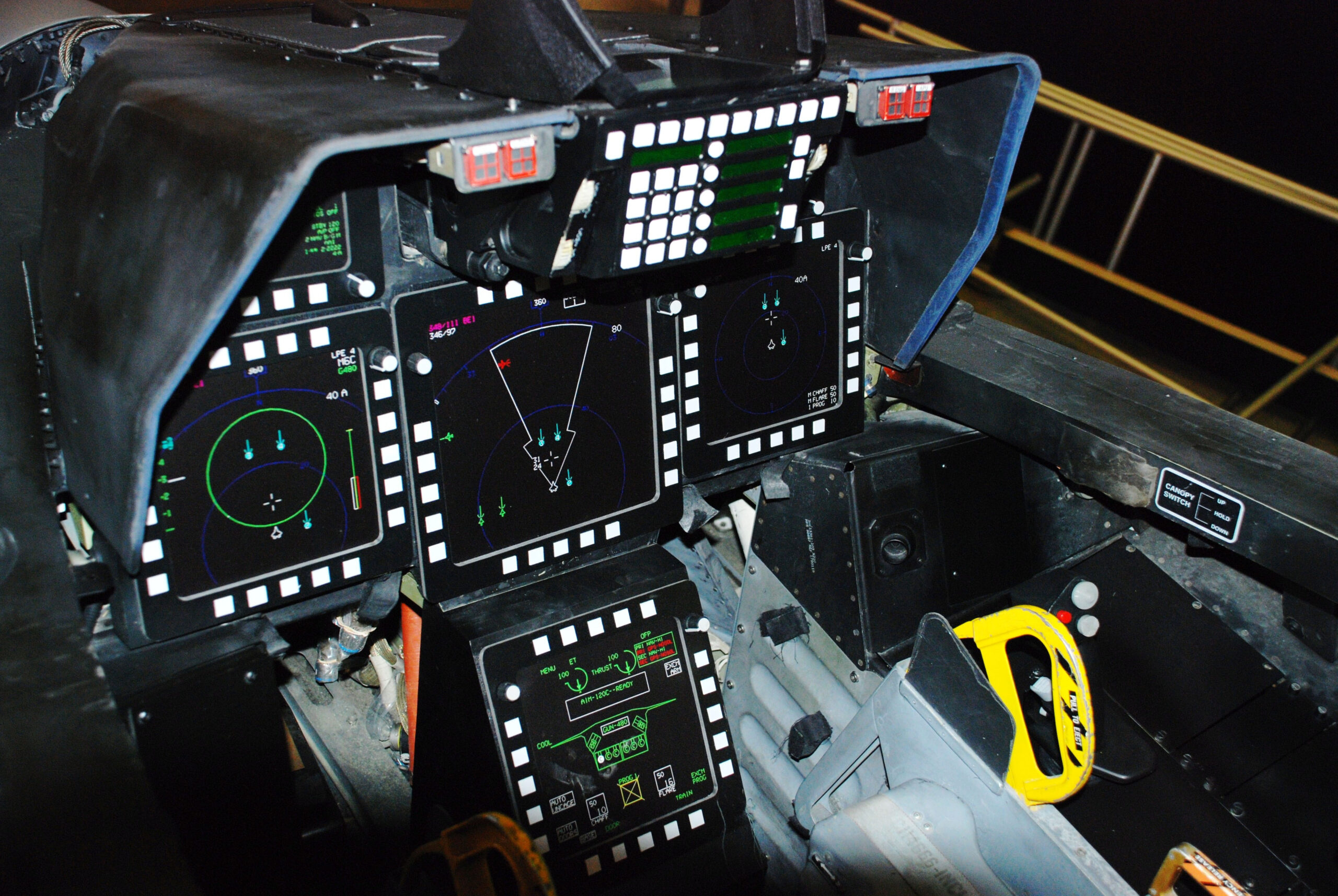
The fusion part has additional benefits beyond displaying actionable information to the crew. It provides expanded tactical options, maximizes the use of an aircraft’s sensor suite in a largely automated way, and enhances the ability to more easily leverage off-board sensor information. Maybe one of its greatest features is the vastly improved fidelity of information collected on various targets via using multiple sensors to investigate and track them in a coordinated fashion. All this translates into being able to more readily identify and engage or avoid threats with confidence. This superior situational awareness can also give these aircraft the ability to work as force multipliers for lesser aircraft in something of a forward combat director or ‘quarterback’ function, under some circumstances.
So-called ‘4.5 generation’ (deeply upgraded 4th generation) fighters are receiving some of these capabilities, to various degrees, but aircraft designed from the ground up to maximize sensor fusion still have advantages.
Sensor fusion still requires a very complex array of disparate sensors, emitters, and communications systems, as well as their individual computer, cooling, and accessory power hardware back-ends. This is all packed into an airframe where weight and volume are at an absolute premium. In other words, the radar is a separate set of hardware from the communications systems, and the electronic warfare system is largely separate, and so on. Then all these ‘federated’ systems have to be integrated and their data ‘fused’ together via the aircraft’s onboard computers and expansive software logic containing millions of lines of code.

Low observable (stealth) shaping and materials requirements add a whole other layer of complexity when it comes to packing all these components into a high-performance jet. Maintaining all these systems and their antennas, wiring, black boxes, and other support components, are also a big challenge that adds to sustainment, personnel, and supply chain costs and complexity, and detracts from aircraft readiness.
Even more so, getting all the different hardware and software elements ‘talking’ to each other properly via the aircraft’s central mission computers is a major task. Upgrading the aircraft’s collective capability is a whole other issue as one change to one system could impact the others physically or in the software environment, and also affect how reliably each system’s data is, as well as how clearly it is conveyed to the crew. Making sure one emitter does not interfere electromagnetically with one another is also a continuous issue. The time it takes to test and evaluate any change to these systems or the software that underpins them is hugely expensive and slows down the deployment of upgrades and fixes, as well as new features and hardware.
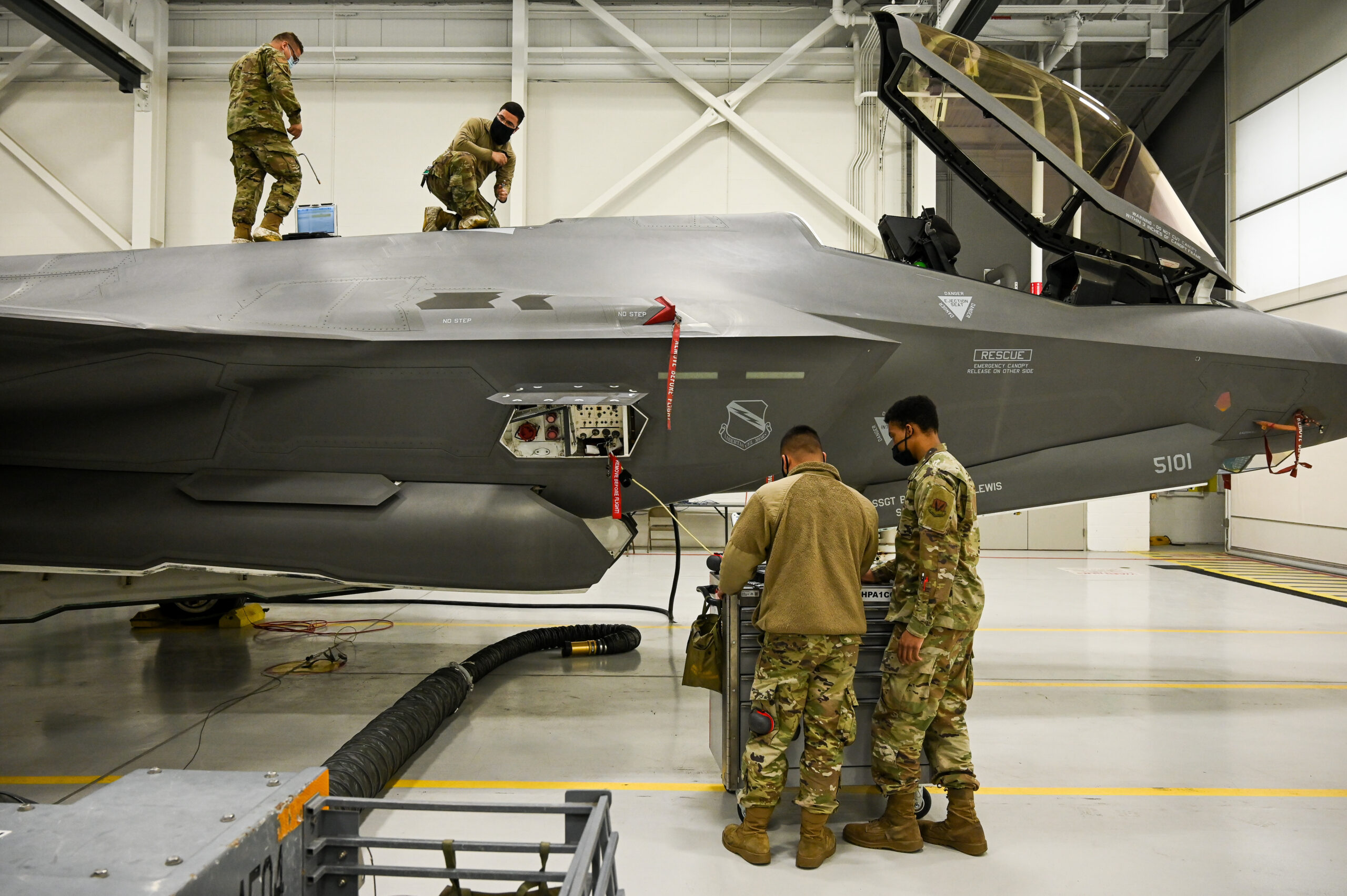
Once again, sensor fusion is the key here, and ‘ghost tracks’ and false positives are a real thing when it comes to these types of systems’ highly complex and ongoing development. Deficiencies here could delay critical decision making which can lead to very unfavorable outcomes in a real fight.
Strength Through Simplification
Enter the next step in the evolution of onboard fusion — literally fusing many of the sensor, electronic warfare (as well as the ability to trigger cyber attacks), and communications functions into single multi-mode AESA arrays. While there would still be a need for some additional passive antennas on an aircraft, as well as active ones for more rudimentary communications, this represents a drastic step forward from where we were previously.
Instead of multiple systems each doing one thing distributed around the aircraft, single arrays can now execute many of these applications. They can also accomplish these tasks using advanced low-probability of intercept (LPI) modes that are tailored to their capabilities and to each function. These modes, paired with their super fast-scanning, very high-power, precise narrow beam abilities, and wideband capabilities, make them very hard to detect and even harder to classify and geolocate if detected at all.
All three of these modes could be ‘interwoven’ nearly simultaneously. To the aircrew, it would seem just as if there were discreet arrays and systems for all these functions installed around the aircraft. The scheduling of tasks for each array is centrally managed and largely automated. By spreading these arrays around the aircraft, even if they are different sizes and configurations, spherical or near-spherical coverage for all these core capabilities can be realized with extreme efficiency.

Using a group of AESA arrays in this manner would also likely result in lighter, more capable combat aircraft with more available internal volume and less complex wiring. It also means the system can be more easily upgraded both in terms of new hardware and especially new software as the hardware is consolidated into far less individualized components. Testing and validating these functions could also be accelerated, potentially drastically.
Under such a concept, because you are buying one fully integrated system that uses many less individualized hardware components, not a collection of single-function systems that are patched together, you can achieve great economies of scale. This is especially true because these arrays can usually be scaled in size and configuration and can equip many types of aircraft and even ground and surface vehicles for different applications. Leveraging existing 5G manufacturing channels and even some components, can also drastically reduce costs and increase speed of delivery.
Just under the umbrella of NGAD alone, if the same family of arrays that equip a manned tactical aircraft could be used on unmanned Collaborative Combat Aircraft (CCAs) of various sizes and configurations, this would not only allow for far more seamless integration and massive economies of scale, but also could be a boon for maintainers working forward in the field.

The commonality of replacement units and parts, as well as having fewer total system types to maintain overall, would allow for simplification and consolidation of critical maintenance tasks. Updating core software would also be more standardized. And software is key here as aside from the hardware’s physical performance limitations, it defines the array’s capabilities.
Software Synergy
Running the same basic core sensor software across platforms, especially those that will be part of the NGAD family, could be a remarkable advantage. This is especially true for the electronic/cyber warfare component that these arrays offer.
Cognitive Electronic Warfare, where countermeasures to suddenly appearing or ‘pup-up’ radio-frequency threats can be generated using AI not in weeks or days, but onboard the aircraft itself or data-linked in from afar in near real time, is an emerging capability that would provide a huge advantage in future fights. So, if a potential threat’s RF ‘fingerprint’ is not recognized in the aircraft’s onboard threat library, but it still deems it a threat, the software can analyze it and create code to best deploy a waveform to counter it based on the available hardware on the aircraft. That is where the wideband multi-function arrays can go to work in deploying those electronic attacks.
Sharing software and a family of multi-function arrays means that if a new threat is detected and effectively countered by one platform, that EW solution could then be data-linked to all the other platforms in the vicinity and even beyond in near real-time. This could still be done with a mix of different software and hardware systems on different platforms, but it would be far easier if they were equipped with the same family of hardware and software. For what is already an air combat ‘ecosystem’ concept like NGAD, it seems like this would be a highly attractive path to take.

Deep interoperability between common software and hardware within the NGAD ‘ecosystem’ should be critical. Networking the manned component with the unmanned components of NGAD and linking them together via a common family of code and hardware would allow them to more seamlessly optimize communications, radar, and electronic/cyber warfare actions across the battlespace. This is key, especially in the EW realm.
Cooperative/collaborative EW across a large area presents a whole other level of capabilities to blind and confuse the enemy in a much higher-fidelity manner than employing legacy electronic warfare tactics from single platforms against single threat emitters and communications nodes. Much more complex effects can be achieved by connecting distributed EW-enabled platforms together and allowing tactical problems to be solved cooperatively, in a far more dynamic fashion.

Once again, the ease of integration brought on by common multi-function arrays could turbocharge software development that will increasingly rely on machine learning and AI to maximize performance across multiple networked platforms. ‘Scheduling’ each platform’s array emissions based on momentary need and overall mission objectives across multiple formations is possible and could have major advantages, too.
This could include a drone receiving a particular piece of ‘requested’ radar information from a manned platform 100 miles away, or using an NGAD platform’s AESA to jam a sensor for another NGAD platform not even in the same formation. This could theoretically be done in a nearly seamless manner, without any real degradation in each platform’s primary sensor tasking, and vice versa.
Now imagine these basic kinds of functions being done across multiple formations of aircraft, or even across an entire operating area, seamlessly, many, many times per second. It could open up a totally new bag of tricks. The options for blinding, misdirecting, and distracting enemy air defenses would be far greater than they are today. Pair this with smaller air-launched EW-enabled drones capable of stand-in jamming and direct attacks, and enemy air defenses would be presented with problems they were unlikely to have been designed to confront — at least for the time being.
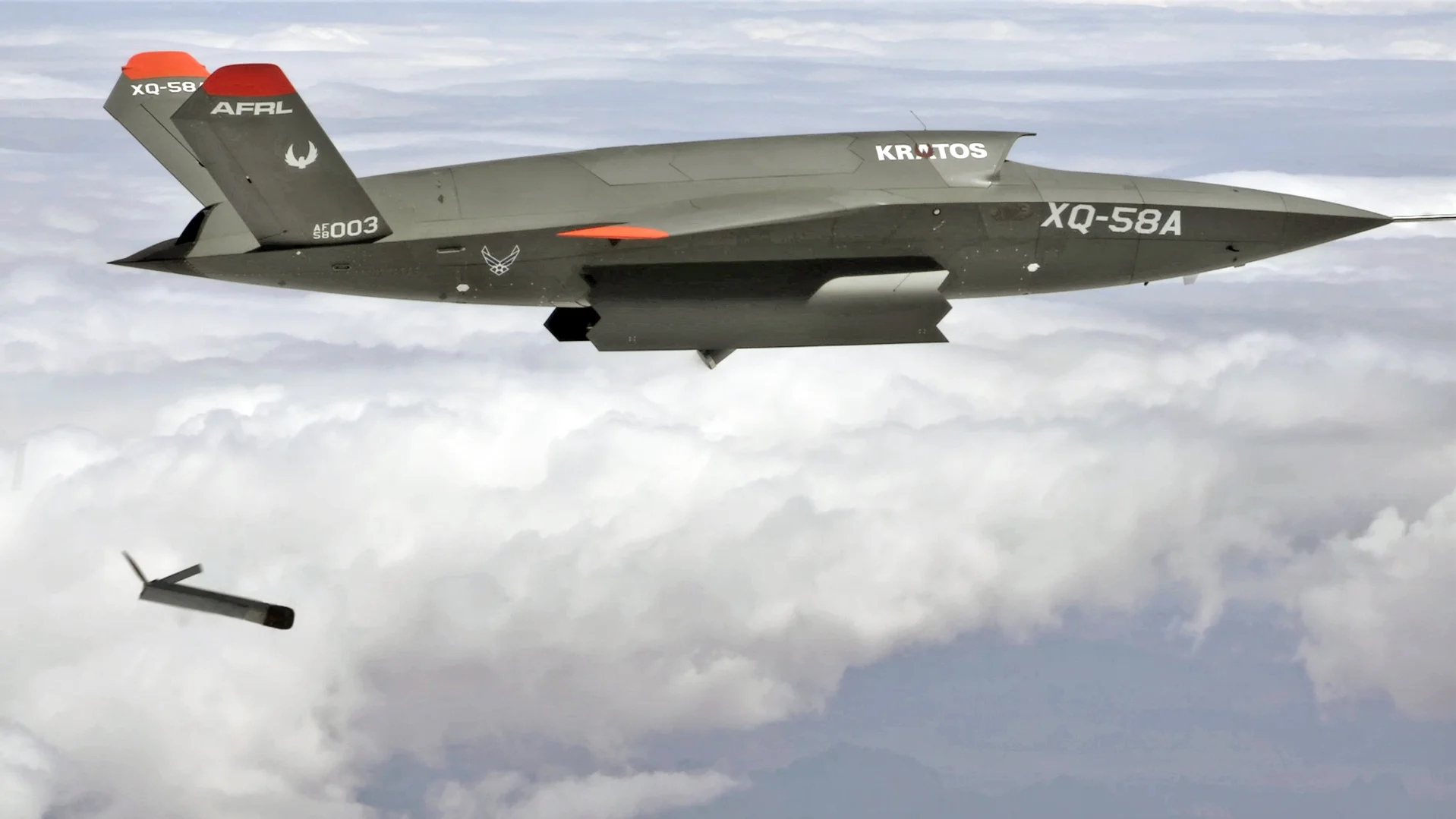
Basically, this would be a swarm-like capability, but without a total swarm concept. One where sensor, EW, and communications needs can be pulled based on predefined allowances, priorities, and other parameters across a formation or multiple formations and beyond when it makes sense to do so and to different degrees according to mission goals. This way, no single platform is limited to its own suite of sensors, communications, and electronic warfare capabilities. At the same time, the level of automation and emissions profiles can be all set in advance to react to various circumstances or changes can be made at any given time manually.
Once again, all this could possibly be done with disparate array types running different base software, but the advantages of leveraging the same software and hardware family are glaring.
Arrays As Part Of The Airframe Itself
Now for the wild card. It’s possible to create ‘conformal load-bearing antenna structures’ (CLASs) that are both arrays and integral parts of an airframe itself, and not just for simpler applications, but also highly complex ones. This would represent a further leap in multi-role sensor capability and aircraft performance for NGAD. In fact, it would unlock exciting new design and sensor performance possibilities that could be a core component of the shadowy program.

The CLAS concept has been maturing for decades and there have been massive leaps in large composite structure material science and manufacturing and radar array technologies in the last decade or so. These developments make major use of complex CLASs throughout an airframe far more plausible than just a decade ago.
While CLASs are already being used to a limited degree — even in the F-35 for some of its antennas built into its wing structures, for instance — the concept has certainly been extrapolated much farther in the classified realm. The B-21 Raider and other vehicles in its Long-Range Strike family of systems could potentially leverage this technology to a great degree.

With the CLAS concept, large parts of an aircraft’s wings or entire fuselage sections could become integrated multi-function arrays capable of radar, EW, and communications. Basically, the airframe itself would become a massive collection of arrays. This could drastically reduce weight and increase available internal volume, as well as create much larger and more powerful arrays while sacrificing nothing in terms of aircraft performance. In fact, it would change how the airframe is designed and built from the outset, which could unlock new performance possibilities. You can read more about what NGAD could potentially bring to the table in this previous report.
While this makes less sense for lower-to-mid-tier CCAs, whether this concept will be used to an unprecedented degree for the manned NGAD aircraft isn’t known, but it very well could. I would even step a bit further and say this is likely the case. It certainly would be a very attractive feature, especially when range, payload, and low observability are primary design drivers. Also, considering these aircraft will cost “hundreds of millions” each, large, exotic, load-bearing antenna structures could be a key feature that would contribute to this high cost. It’s possible that those arrays could still use the same software core as the rest of those used in the NGAD ecosystem, too.
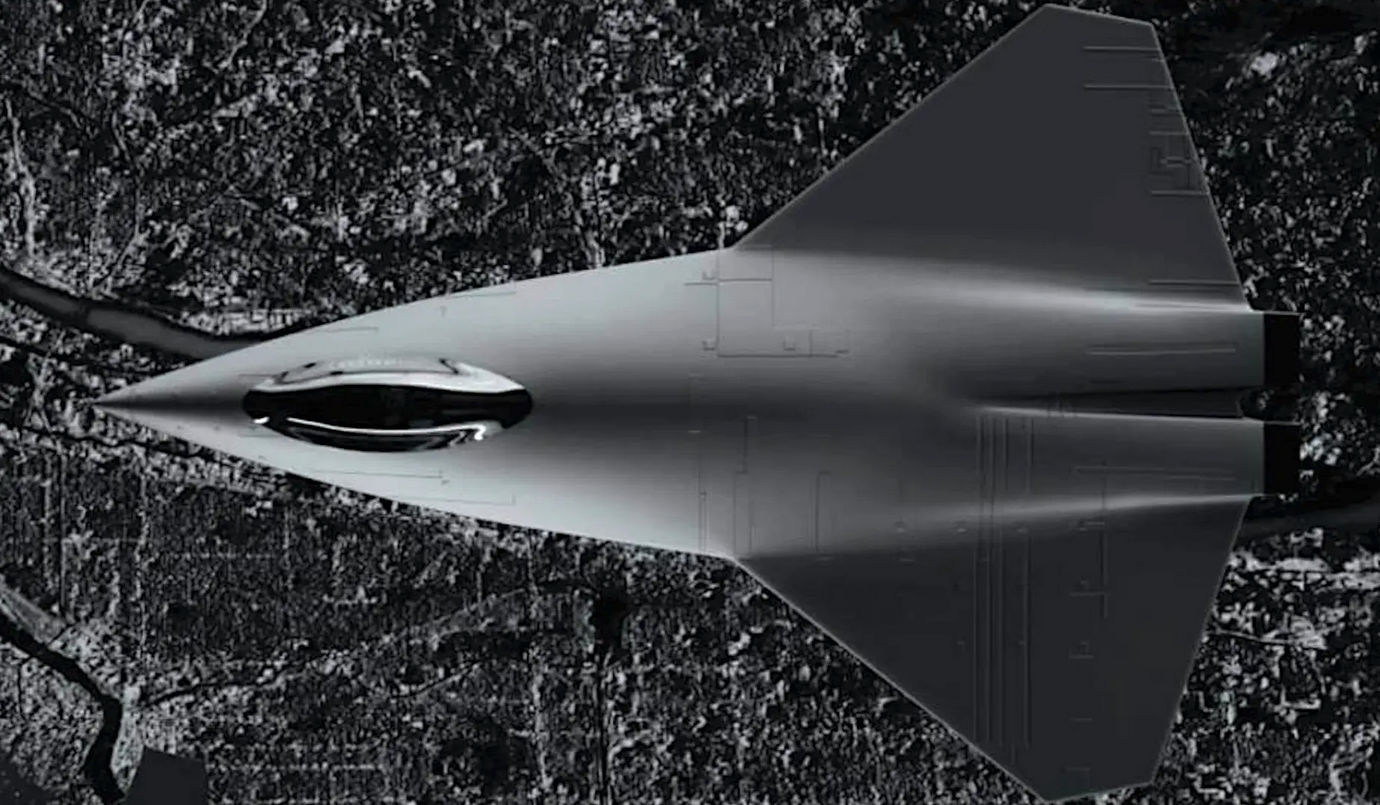
Even a mix of modular traditional arrays and CLAS arrays on a single airframe is possible for the manned NGAD aircraft. A large CLAS arrangement could provide forward hemisphere coverage, while smaller multi-function arrays cover the other areas. A very robust line-of-sight data-link system providing spherical connectivity is needed regardless, which the smaller arrays could provide along with their other functions.
It’s also possible that the manned NGAD component could feature less extensive sensor and electronic warfare capabilities, instead relying near totally on uncrewed platforms for those functions. Although, I find this very unlikely considering what has already been indicated and projected about the extreme cost of these aircraft.
If the manned NGAD uses all CLAS arrays, which would be an incredible achievement, when it comes to modular and scalable multi-function AESAs, the unmanned portion of NGAD, which could end up being thousands of aircraft, could benefit highly from the technology.
While it certainly isn’t sexy, 6th generation combat aircraft’s potential use of the latest in active electronically scanned array technology and the software and computing power that underpins it is very exciting. And these capabilities will only become more important as the realm of air combat moves towards a largely uncrewed and fully cooperative swarming future.
Contact the author: tyler@thedrive.com
